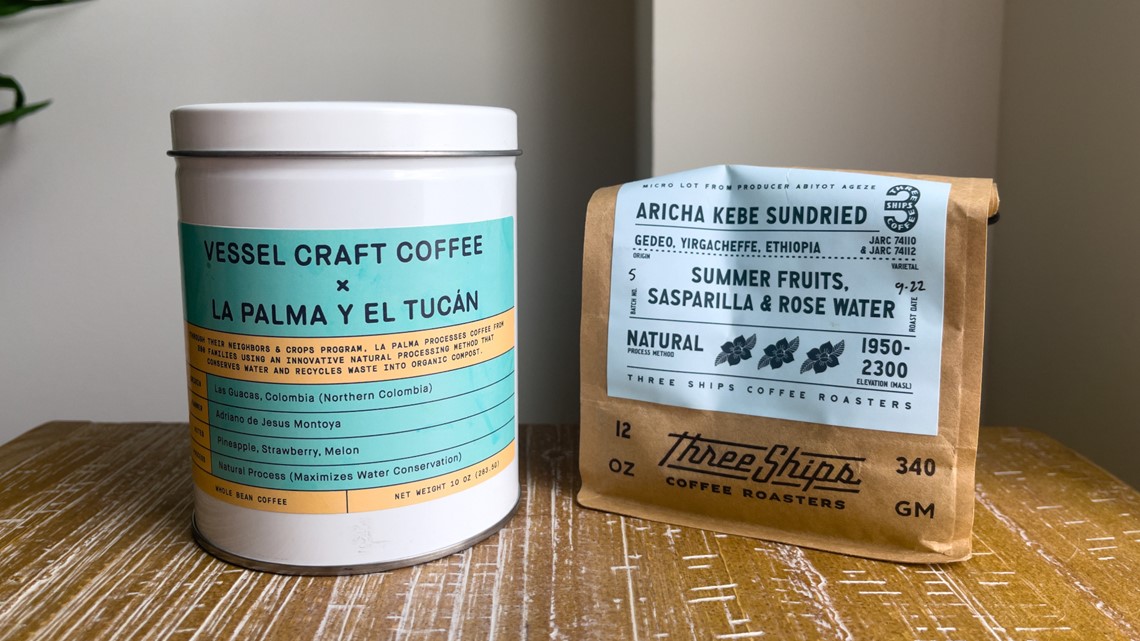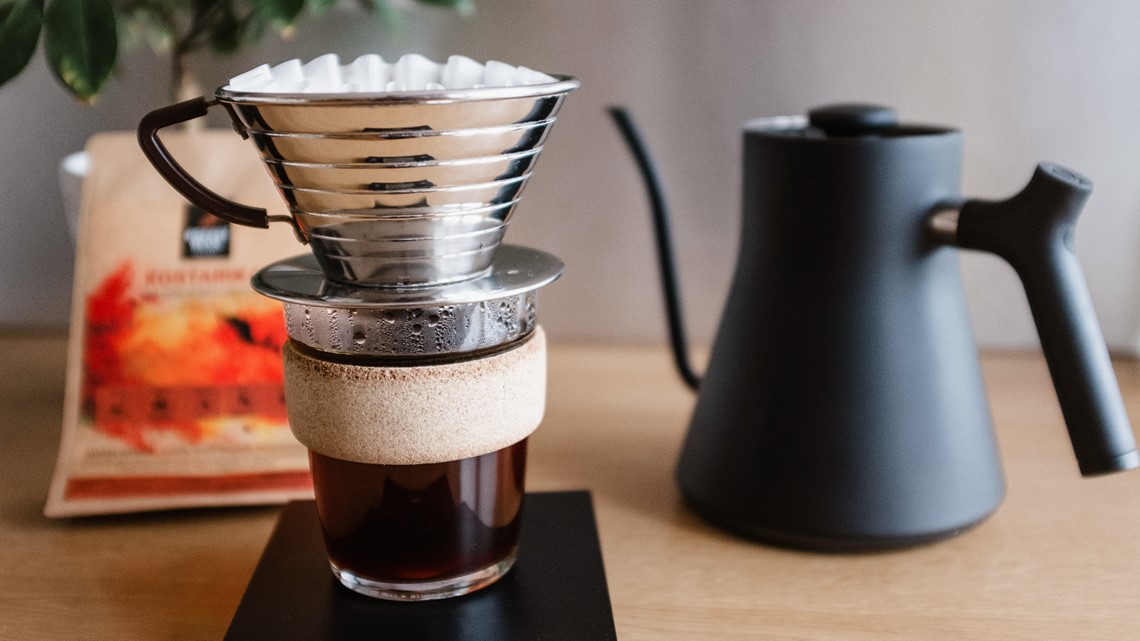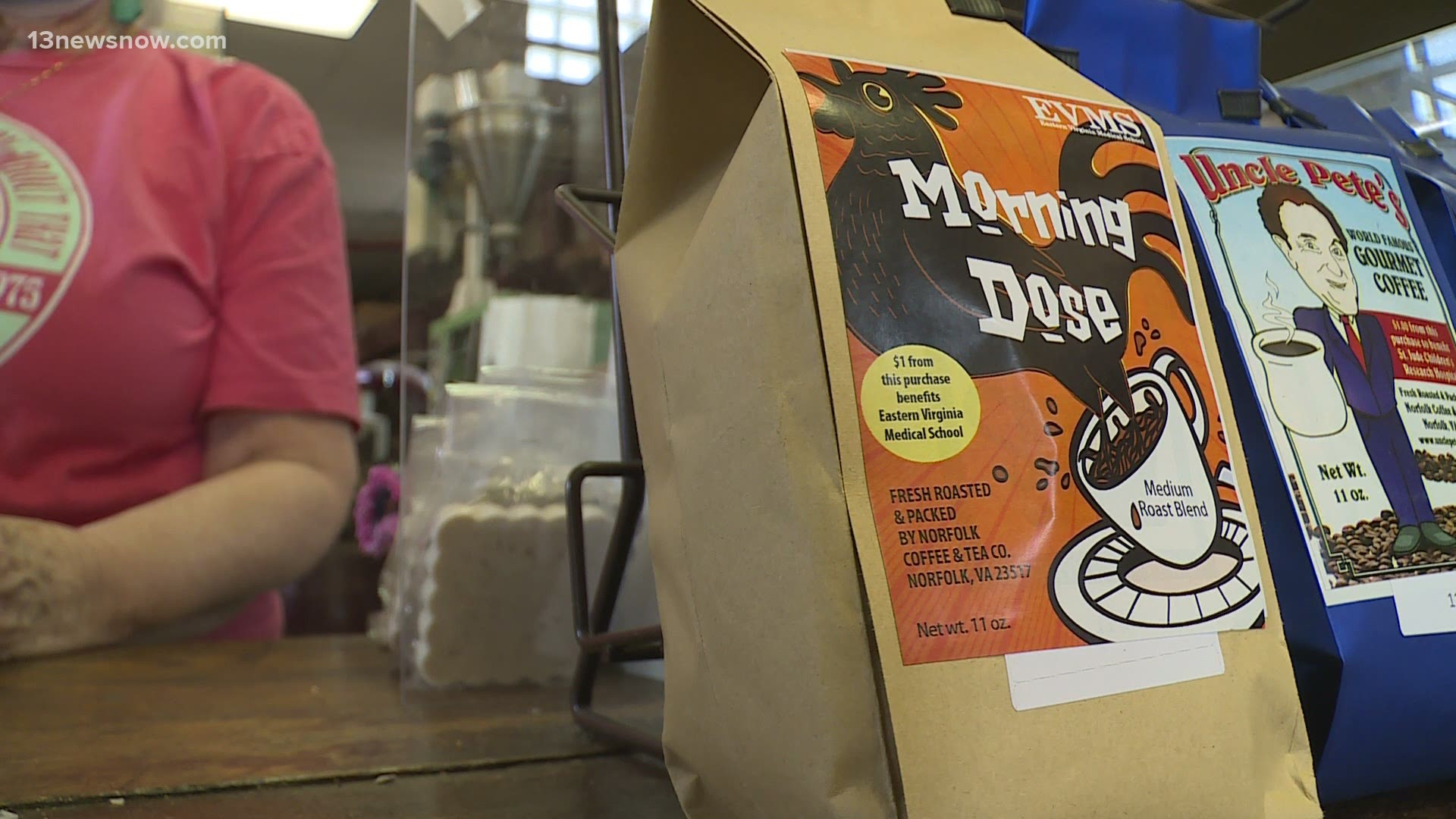NORFOLK, Va. — Author's note: The video above is on file from May 2021.
If you’re looking to take up a new hobby, learning to brew coffee by hand is a fun one.
Most of the time, coffee is just a good way to get that needed boost in the morning. But with some skills and knowledge put forth, it can also be a high-quality beverage, similar to craft beer or wine.
13News Now reached out to several coffee shops in Hampton Roads for some tips and advice. Here's what they had to say.
Buy your beans locally. Pay attention to the labels.
Vessel Craft Coffee in Norfolk and Canvas Coffee in Newport News both recommended buying your coffee beans from local roasters in order to get them fresh.
Sarah Cowherd, the founder of Vessel, said locally-roasted coffee will usually be fresher and roasted in small batches, resulting in more taste and nuance.
Alex Hoyes, the co-owner of Canvas, said the number one thing to look for on coffee bags is a roast date. According to him, the roast dates will ensure freshness.
Sean Kopack, the co-owner of Kobros Coffee in Norfolk, advised paying attention to how detailed the labels on coffee bags are. Detailed bags will list several characteristics of the roast, including the bean's country of origin, the way they were processed and how high above sea level they were grown at.
This may sound complicated, but Kopack said these are important factors in quality and taste. According to him, the more detailed a bag is, the more the roaster is probably caring about everything else they're doing.
If you don't know where to start, Hoyes said a knowledgeable barista will point you in the right direction.


Invest in some gear, but you don’t have to break the bank.
Having quality coffee beans can make a difference, but having the right gear is important, too. Luckily, it's not too pricey.
Cowherd and Hoyes recommended two essentials to get started: a decent grinder and kitchen scale.
According to Cowherd, burr grinders produce a more even "grind size." That's important because different brewing methods require different grind sizes. For example, a French press and cold brew should use a coarse grind, while a pourover should use a medium grind. You can go for a hand or electric grinder.
Hoyes said specialty coffee requires weighing the beans in grams, so find a scale that can do that. According to him, it allows for consistency and preciseness in your brew.
For brewing devices, Hoyes and Kopack recommended a simple pourover, such as a Hario V60 or Kalita Wave. You can probably find these plus the necessary filters for around $30 to $40. Also, Kopack recommended a gooseneck kettle to control the water flow when pouring.


Make the best of your two ingredients.
A good cup of coffee boils down to two ingredients: coffee grounds and water, and you'll need to make sure those are optimized.
Hoyes said there are four main factors when brewing your coffee: proportion, grind size, water and freshness.
Proportion is where the kitchen scale comes in handy. For every gram of coffee grounds, there needs to be even more water. Hoyes says Canvas goes with a 1:16 coffee-to-water ratio: for every one gram of coffee, use 16 grams of water. If there's too little water, the coffee will be too strong. If there's too much water, it will taste weak.
According to Hoyes, your brew will be 97 to 98 percent water, so make sure it's good. This means avoiding tap or distilled water. Also, the water will need to be hot enough to activate the compounds within coffee grounds. His recommended water temperature is 190 to 205 degrees Fahrenheit.
Author's note: The video above is on file from August 2021.

